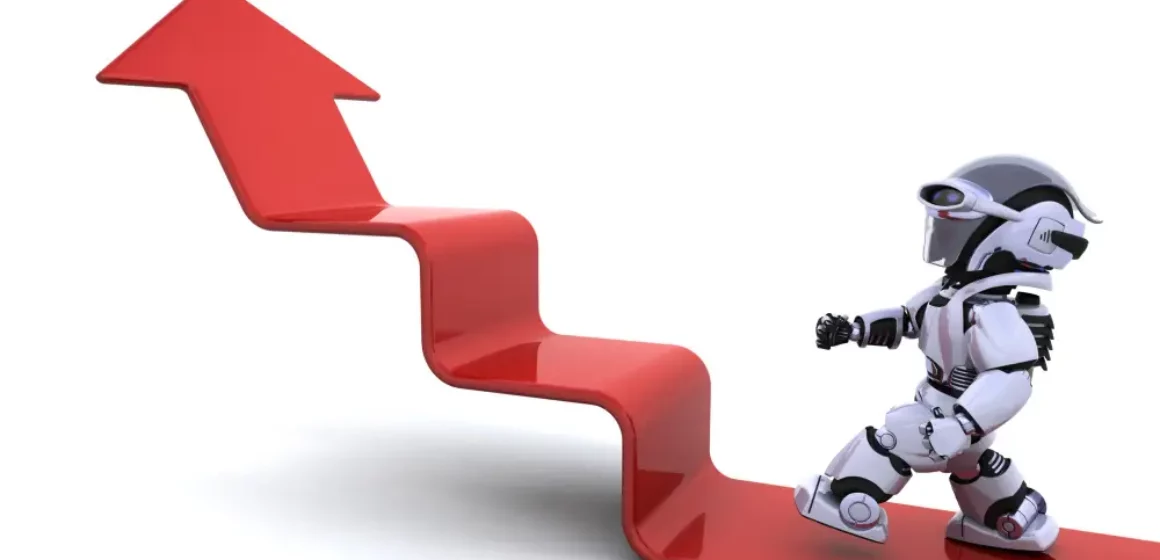Robots on the Rise? Robots and AI have the potential to raise the standard of living faster than any other technology mankind has ever experienced. We are at the beginning of what will likely be exponential growth in robotics technology thanks to ongoing advances in Artificial Intelligence (AI), edge computing and high-speed internet access with the proliferation of 5G. But first, let’s talk about the drivers of growth.
Low birth Rates and Aging Populations. The U.S. has seen growth in the labor pool slow from an annual rate of change of 3.3% in 1978 to less than 1% for most of the last decade, this isn’t just a domestic problem either. Much of the developed world is facing aging populations and weak labor pool growth because of low fertility rates, resulting in labor shortages. Since March 2018, there has been more than one job opening for every job seeker in the U.S. (excluding during the worst of the pandemic), which is a headwind to growth.
Online Shopping. According to Statista, nearly a quarter of retail sales worldwide will be online by 2026, which means further growth in fulfillment centers and shipping logistics. Increasingly, many of the steps from when an order is placed through to delivery can be addressed by robots that don’t get tired, don’t need bathroom breaks or holidays and are perfectly fine spending their entire lives inside a distribution center.
Onshoring and Near-shoring. The pandemic accelerated the existing geopolitical-driven trend towards on-shoring or near-shoring manufacturing. The invasion of Ukraine and the related energy crisis add additional tailwinds. This supply chain adjustment is occurring under tight labor market conditions, which means higher wages, and thus making robotics relatively less expensive.
Cleaner Transportation. Aside from the onshoring trend, we are also amid a global shift in transportation technology as nations look to reduce emissions. According to the International Energy Agency, the invasion of Ukraine is accelerating that transition, and it expects to see the demand for all fossil fuels falling or plateauing going forward. Before the Ukrainian conflict, the European Union was already targeting 100% electric vehicle (EV) sales by 2035, while China was targeting 50% new energy vehicles by 2035. Production lines for combustion engine-based vehicles cannot simply be adjusted to produce EVs. Entirely new lines need to be built, and with tight labor markets and the challenges just faced during the pandemic, those lines will be increasingly operated by robots rather than humans.
Advances in Robotics. The democratization of robotics is helping to make all this possible, thanks to advances in technology that allow for lower-cost units and more manageable out-of-the-box implementations that are opening up new customer segments. We are also seeing advances in robotic technologies that will enable higher-mix, lower-volume productions that were not previously economically viable. Advances in AI and the proliferation of edge computing capabilities further expand the possible applications of robotics.
The Accelerating Robotics Market. The robotics market can be roughly divided into two main categories, industrial robots and service robots, and typically does not include devices such as remote-controlled drones, voice assistance or smart devices and appliances. Industrial robotics can be considered a subsector of the automation industry. We are also seeing the emergence of collaborative robots, which blend industrial and service robots’ functions. These co-bots are designed to work in close proximity with humans and are expected to grow to a nearly $1.5 billion market by 2026. According to Statista, the global market for industrial robots was around $45 billion in 2020 but will reach around $102 billion by 2027. The electrical/electronics industry became the largest area of application for industrial robots in 2020, followed closely by the automotive industry. According to the International Federation of Robotics, in 2021, new robot installations hit a new record high with 31% year-over-year growth in units that translated into a compound annual growth rate (CAGR) of 11% from 2016 to 2021. The overall stock of robots rose 15% in 2021 to 3.5 million units, with a CAGR of 14% from 2016 to 2021, and despite the slowing global economy, 2022 has seen strong order intake for robotics manufacturers.
Robotics Companies to Watch. Most companies that are active in robotics have seen their share prices hit, along with the major market indices, making them relatively more attractive. The key players in the market are primarily located in Asia and Europe, including the “Big Four” of Robotics:
ABB Ltd (ABB) is globally the number two robotic arm supplier.
Fanuc (FANUF) is divided into three product segments: one for its basic products, Robot, which focuses on robotic arms for industrial applications and Robomachine, which are larger and dedicated robots for ultra-precision work.
KUKA (KUKAY) is the “purest” robot company and its primary customers are all the major auto manufacturers.
Yaskawa Electric Corp (YASKF) is Japan’s largest industrial robotics company and was one of the first manufacturers to apply industrial robots to semiconductor production.
Other publicly traded companies involved in industrial robotics production include the following:
Boston Dynamics is famous for making the robotic dog and is developing a humanoid robot called Atlas. It was originally part of the Massachusetts Institute of Technology (MIT) but is now a Hyundai Motor Group (HYMLF) subsidiary.
Omron Corp (OMRNF) is an industrial conglomerate focused primarily on industrial automation, including robotics.
Amazon’s (AMZN) robotics division, originally called Kiva Systems, creates and implements autonomous robots, control software and robotic language and vision sensing for its fulfillment centers.
Companies that provide robotic component suppliers, integrators and service robot manufacturers include:
Accuray (ARAY) CyberKnife system administers robotic radiotherapy, which pinpoints specific areas where cancers are found, keeping collateral damage to a minimum, versus traditional chemotherapy.
iRobot (IRBT) is a consumer-oriented robotics company that has agreed to be acquired by Amazon, but the transaction still faces some hurdles.
Intuitive Surgical Inc (ISRG) designs and produces robotic systems for assisting in minimally invasive surgery.
Stryker (SYK) makes a wide array of medical equipment, including robotic-arm-assisted surgical machines.
UiPath (PATH) offers robotic process automation software that implants AI into robots to help them perform tasks more efficiently and learn.
Forget the Big Fear. Every technological advancement in human history has been met with dire warnings that it would result in enormous swaths of the population becoming unemployed and destitute. In 1948 13.4% of the U.S. workforce was employed in the agriculture sector. Today, it is just over 1%, and yet we are producing more than ever, with farm output expanding over 13-fold during that time. The percentage of Americans employed in manufacturing has fallen from over 26% in 1953 to around 8% today, while GDP from manufacturing has risen 25-fold. Those are just two areas that have seen a massive decline in employment while production grew, and today, we continue to have one of the lowest levels of unemployment in history.
Ah, but this time is different, they say. This time there will be too many who will not have the ability to adapt to such an increasingly sophisticated world, they say. Imagine telling someone living in the 1500s that today, not only is the global literacy rate over 86%, but today, there are nearly 5 billion smartphone users, and try explaining that all that is made possible by an incredibly small device. Imagine telling them that today someone in Bali can sell a dress they made to someone on the other side of the world with minimal fuss thanks to today’s mobile technology. Never underestimate the ability of humans to adapt and learn.




